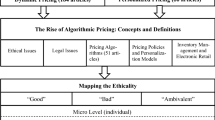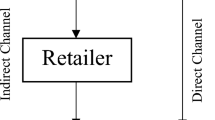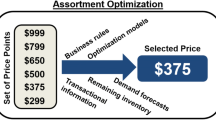Abstract
With the increasing demand of consumers for diversified network services, more and more network service providers are competing fiercely in providing network composite services in order to meet the market demand. Network composition service is the most basic service. According to certain rules, it synthesizes new services and then realizes new functions. At present, the pricing of service composition by network service providers in the market is not scientific, meanwhile random and temporary pricing is still relatively common. In order to scientifically guide network service providers to price composite service scientifically and effectively, improve the profit of service providers, and meet the maximum service demand of consumers. Based on the theory of market demand price, this paper applies the pricing model in supply chain management to the pricing link of composite service network. From the perspective of network service providers, a two-objective competitive pricing model is constructed, and the simulation example analysis and sensitivity test are carried out. The simulation results show that the composite service provided by network service providers satisfy the general market demand price theory. In order to help service providers make scientific decisions on price adjustment of network services, this paper also makes sensitivity analysis of market demand on price changes. The research shows that the composite service provided by network service providers satisfy the general market demand price theory, while adjusting the price can only meet the general market demand price change theory if the original price is less than half of the original price.







Similar content being viewed by others
References
Paulraj, D., Swamynathan, S., Chandran, D., et al. (2016). Service composition and execution plan generation of composite semantic web services using abductive event calculus. Computational Intelligence, 32(4), 711–737
Moghaddam, M., & Davis, J. G. (2019). Simultaneous service selection for multiple composite service requests: A combinatorial auction approach. Decision Support Systems, 120, 81–94
Chen, I. R., Guo, J., & Bao, F. (2017). Trust management for SOA-based IoT and its application to service composition. IEEE Transactions on Services Computing, 9(3), 482–495
Moser, O., Rosenberg, F., & Dustdar, S. (2013). Domain-specific service selection for composite services. IEEE Transactions on Software Engineering, 38(4), 828–843
Feng, L., Lin, Z., Liu, Y., et al. (2017). A clustering network-based approach to service composition in cloud manufacturing. International Journal of Computer Integrated Manufacturing, 30(3), 1–12
Khansari, M. E., Sharifian, S., & Motamedi, S. A. (2018). Virtual sensor as a service: A new multicriteria QoS-aware cloud service composition for IoT applications. Journal of Supercomputing, 74(10), 5485–5512
Li, H., Liang, M., & He, T. (2016). Optimizing the composition of a resource service chain with interorganizational collaboration. IEEE Transactions on Industrial Informatics, 99, 1–1
Lim, C. H., & Kim, K. J. (2017). IT-enabled information-intensive services. It Professional, 17(2), 26–32
Ji, S., Li, B., & Dong, Q. (2016). Incremental verification of evolving BPEL-based web composite service. Chinese Journal of Electronics, 25(1), 6–12
Deng, S., Huang, L., Hu, D., et al. (2016). Mobility-enabled service selection for composite services. IEEE Transactions on Services Computing, 9(3), 394–407
Zhang, X. M., Fan, Q. L., Wang, D. F., & Leng, J. Z. (2018). Analysis on bundle pricing of product and service of telecom supply chain based on network externality. Journal of Systems and Management, 27(2), 366–373
Qiang, K. D., & Management S O. (2015). Internet service pricing based on customer loyalty. Value Engineering, 34(11), 244–246
Ishibuchi, H., Tsukamoto, N., & Nojima, Y. (2008). Evolutionary many-objective optimization: A short review. In IEEE world congress on computational intelligence (pp. 2419–2426).
Hamidi, M. (2015). Solution of P versus NP problem. Algorithms Research, 1(4), 1–7.
Acknowledgements
The finding is sponsored by the National Social Science Fund of China (Grant No. 18CGL015).
Author information
Authors and Affiliations
Corresponding author
Additional information
Publisher's Note
Springer Nature remains neutral with regard to jurisdictional claims in published maps and institutional affiliations.
Rights and permissions
About this article
Cite this article
Liu, Z., Guo, H., Zhao, Y. et al. Optimal pricing decision of composite service offered by network providers in E-commerce environment. Electron Commer Res 22, 177–193 (2022). https://doi.org/10.1007/s10660-021-09487-8
Accepted:
Published:
Issue Date:
DOI: https://doi.org/10.1007/s10660-021-09487-8




